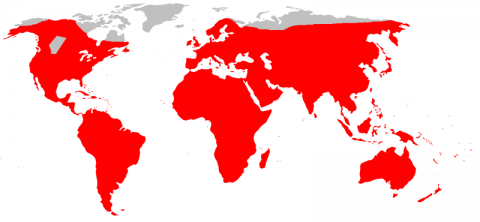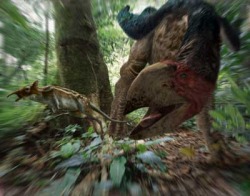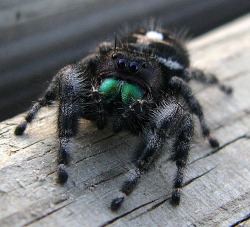Top 10 Successful Species
Throughout history, Earth has encountered a group of, or an individual species, that are vastly superior to all other in their ability to dominate all forms of life. Their complexity varies, their reason for being on this list varies, but one thing is for certain. These are the best of the best when it comes to being a successful species.
10. Rodents
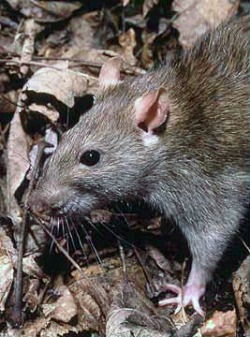
Next to humans, Rodents are quite possibly the most successful mammals ever. They've managed to make it to almost every continent and most of the South Pacific Islands and have filled every available niche quite nicely. Some of them have very short gestation periods, only 21 days on average and can produce up to 14 offspring. Another factor is the lack of predators some species face, this freedom allows population to explode, and makes taking over an area easy. Rodents have a treasury of handy talents tucked away ready to deploy. Beavers for example, build their dams (making them the only other animal besides us to alter their environment) to make an artificial pond/marsh. Their dams can reach incredible lengths, there is one in a Canadian National Park that reaches an astounding 850 meters. Now keep in mind there's 1, 000 meters in a kilometer. And not to mention some beaver damns can last to up to 1, 000 years, allowing a multitude of beavers to thrive there. Voles have probably the shortest lifespan of any mammal, at only 3-6 months on average, with the record being 18 months. Their incredibly short lifespan allows them to evolve at such a rapid rate, that they're on their own scale compared to other vertebrates. This gives them the advantage of instead of mentally adapting to something or just avoiding it at all costs, they can physically adapt to, and quite possibly over power said problem. Porcupines too have their own special methods that have allowed their success, their quills. With them they can drive off most predators, only the most determined ones killing them. Their quills can disable an animal for a large period of time, and can cause permanent damage if in the right spot. The most successful of the Rodents is, of course, the rat. Rats will eat just about anything, live in any environment, let it be man made or not. This has allowed the Brown Rat to cover almost the entire planet, aside from select Northern Regions and Antarctica (see below).
9. Hominin
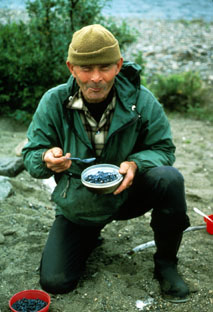
The subtribe Hominin harbors quite possibly the smartest animals that will ever evolve on earth. From Australopithecus, they began to spread out through Eastern Africa, then as evolution progressed, the Genus Homo evolved. Homo Erectus was one of, if not, the first Hominin to leave Africa, and besides Archaic Homo Sapiens/Homo Sapien Sapiens, are arguably the most successful. From 2, 000, 000 years ago till quite possibly 50, 000 years ago they thrived in Africa, Europe, and many parts of Asia. They used very basic tools and lived in Hunter-Gatherer societies and were the first to do so. Their long lived (in terms of Homo, otherwise they were short lived) success was cut to an end by either out competition, or absorption by the Archaic Homo Sapiens of the area. Archaic Homo Sapiens/Homo Sapien Sapiens are by far the most successful of the subtribe, with almost 7, 000, 000, 000 living members of the genus. Though modern Humans haven't been around for very long at all, only a mere 200, 000 years at the oldest, Humans have successfully conquered the entire planet in a way no other creature has come close to. One of the main factors that has allowed Humans to achieve this is the implementation of fire, agriculture, and as said before tools. Humans control which species go extinct, the environment, and almost every aspect of life on earth. The tools/technology in use today are incomprehensible to all life but Humans, and this has allowed such utter domination of life. Modern Humans actually live on every continent, and even in Space for periods of time, a feat no other species has accomplished. As it stands, the fate of all life on earth is in the hands of man.
8. Dinosaurs
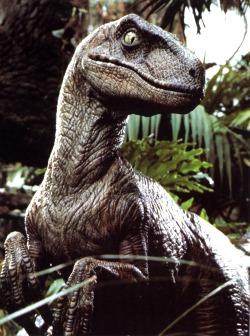
Dinosaurs first appeared 230, 000, 000 years ago, and thrived till 65, 000, 000 years ago, when some cataclysmic event took place and wiped out almost all of them. But not quite all (I'll talk about this later on). For the time they lived, they were the complete and utter rulers of the earth, with the exception of oceans and the sky. They lived on every continent, but then they were at different locations, and at times, all joined together. They were the epitome of evolution and bore some of the most outlandish modifications the worlds ever known. They came in every size and ate almost everything, and being the apex animals for such a long period of time allowed them to focus on extremes, instead of basic needs. All of these magnificent evolutionary upgrades gave Dinosaurs many different advantages over other small creatures, always increasing their extravagant appearance at the same time. Before their extinction, which had the asteroid missed earth, very well might still have not happened, Dinosaurs even looked like they were one of the most successful species, without having to prove it. However, Dinosaurs owe their success partially since they survived two extinction events all of their competition could not. Because of the absence of any competition, they filled every niche on land successfully dominated. Now, they were so successful that (time to refer to my earlier brackets to remind yourself) they even had a backup plan in case of a global apocalypse: Birds. You see for sometime Dinosaurs had been evolving feathers and other bird like tendencies. And when the main large Dinosaurs died off, it left room for the surviving birdlike ones to flourish and evolve towards what they are today; the most varied tetrapod vertebrate. As you know, some birds are absolutely beautiful, while others are graceful hunters, that cannot be said for their ancestors, which appear more Dinosaur than bird at some points (see below).
7. Crurotarsi
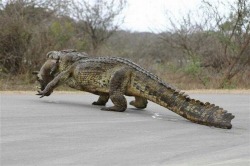
6. Arachnids
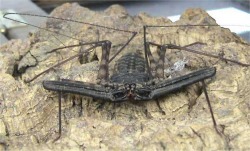
Arachnids are a thing of nightmare. They are incredibly wide spread and live in almost every environment, from the forest and desert, to the arctic, and even such extremes as the tops of mountains and for Spiders, underwater in silk domes with an artificial air supply. They almost never lose their prey when they hunt, and are some can be called a perfect hunter, with some seeming to have evolved purely hunting advantages. There can create their own home, or shelter and then use it as a trap as well. Some spiders and cave spiders (or tailless whip scorpions) display socials behavior, which more intelligent species tend to display, which is uncommon in smaller animals, let alone an arthropod, showing they've been successful enough to evolve their own form of intelligence. An animal can only evolve that trait while living at the top of the food chain or having no threats to itself. Besides this, spiders alone are incredibly numerous, with 1, 000, 000 per square mile or so, given how industrialized the area is. They are almost always the apex predator of their environment, with the exception of each other, humans, and a few small animals. They have very specialized adaptations which allow them to remain fit and keep them being successful. The more common adaptations are their mouths. Camel Spiders and Spiders have large fangs that either stab and inject venom or do sever damage to their victim, depending upon the species. They are incredibly long lived, with some species of Sea Scorpions lived 430, 000, 000 years ago in shallow oceans and the oldest known spider like Arachnid appearing 420, 000, 000 years ago. They have changed quite alot since then, unlike other members of the Order, such as Pseudoscorpion, who have barely changed since 380, 000, 000 years ago. One could argue that they remain unchanged because of their degree of success.
Leave a comment!
5. Insects

Paragraph.
4. Conifers

Paragraph.
3. True Grasses

Paragraph.
2. Bacteria/Archea

Paragraph.
1. Viruses

Paragraph.
